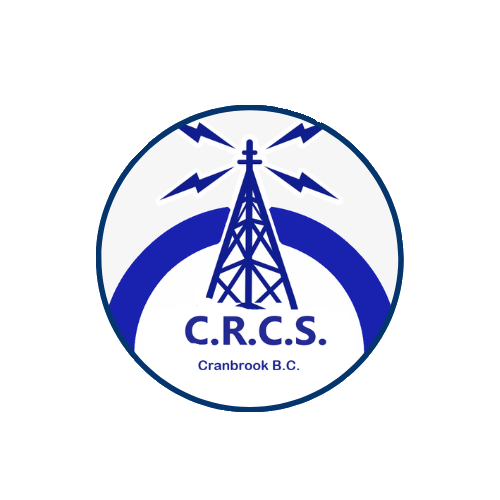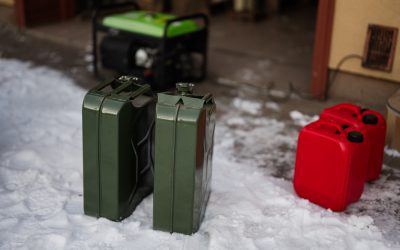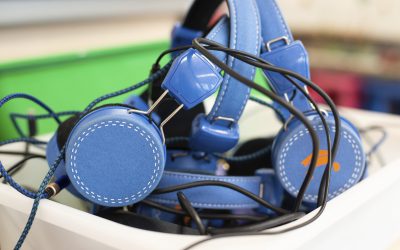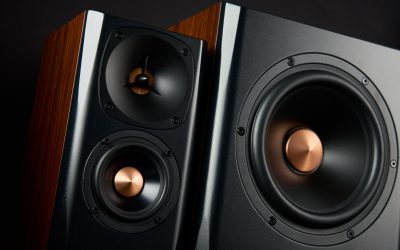When it comes to amateur radio, understanding operating etiquette is just as important as knowing how to use your equipment. Nowhere is this more apparent than on the VHF (Very High Frequency) and UHF (Ultra High Frequency) bands, where the majority of local communication happens. At CRCS, we believe good operating etiquette promotes clearer communication, fosters community, and keeps the airwaves respectful and useful for everyone.
This guide to operating etiquette on VHF and UHF is designed to help both new and seasoned hams keep their on-air presence professional, courteous, and enjoyable.
What Is Operating Etiquette?
Operating etiquette refers to the customary rules and expected behaviors when using the amateur radio frequencies. On VHF and UHF, where communication is often local and direct, good manners are more than just polite—they’re necessary for efficient and enjoyable exchanges. Think of it as radio traffic etiquette. Just like the road, there are rules to help everyone get to their destination safely and smoothly.
Understanding the Basics of VHF and UHF
Before diving into etiquette, it helps to understand the nature of these bands:
- VHF (30 MHz to 300 MHz): Includes the popular 2-meter band (144-148 MHz). Great for line-of-sight communications with handhelds, mobiles, and repeaters.
- UHF (300 MHz to 3 GHz): Includes the 70 cm band (420-450 MHz). Shorter wavelengths allow for better penetration of buildings and urban terrain.
These bands are often used for:
- Local ragchews (informal chats)
- Repeater access
- EmComm (emergency communications)
- Nets
- Mobile or portable operation
Given their accessibility and widespread use, these frequencies often serve as a new ham’s first experience with the hobby.
Key Principles of Operating Etiquette
1. Listen First
Before transmitting, always listen. This helps avoid interrupting ongoing conversations or nets. Take time to familiarize yourself with the rhythm of the frequency. Is someone using it already? Is it a repeater channel with an active group?
2. Identify Properly
FCC rules (and Canadian equivalents) require that you identify your station:
- At the end of a communication
- Every 10 minutes during an ongoing conversation
Use your full call sign clearly. This keeps operations legal and helps others recognize who’s on frequency.
3. Use Plain Language
Avoid CB-style jargon. Instead of saying “10-4” or “what’s your 20,” say “Roger” or “location.” Amateur radio encourages plain English to make communication clear and inclusive.
4. Don’t Hog the Repeater
Repeaters are community resources. Keep transmissions concise, especially during high-traffic periods. Leave a pause between transmissions to allow other stations to break in.
5. Mind the Mic
Speak clearly and directly into the mic without shouting. Use a moderate pace. Don’t tailgate (start speaking immediately after someone else stops); leave a short pause.
6. Respect Nets and Schedules
If a scheduled net is about to start on a repeater or simplex frequency, yield the channel. Nets serve purposes ranging from social check-ins to emergency preparedness.
7. Stay Calm and Courteous
If another operator is difficult to understand or makes a mistake, be patient. If tensions arise, avoid escalating. Never argue on-air. Amateur radio isn’t the place for drama.
8. Avoid Unnecessary Transmissions
Testing your mic? Say “This is [callsign] testing” and move on. Idle chatter or keying up without speaking can irritate others and is discouraged.
9. Use Phonetics Wisely
Standard phonetics (Alpha, Bravo, Charlie, etc.) help ensure clarity when giving call signs, especially in noisy conditions. Don’t invent your own phonetics unless you’re confident they won’t confuse anyone.
10. Follow Local Band Plans
Check with your regional amateur radio society for VHF/UHF band plans. These help allocate frequencies for repeaters, simplex, digital modes, and satellite use. Staying within the plan avoids interference.
Best Practices for Using Repeaters
Repeaters extend the range of handheld and mobile radios. They’re often the first stop for new hams. Here’s how to keep your repeater use friendly and efficient:
- Announce your presence: Say “This is VE7XYZ monitoring.”
- Wait for a response: Don’t be discouraged if no one replies. Try again later or call out on a local net.
- Don’t monopolize: Let others use the repeater. If you’re in a long conversation, pause to let others in.
- Support the repeater: Consider donating to the club or group that maintains the system you use.
Good Habits for Simplex Operations
Simplex (radio-to-radio without repeaters) requires slightly different etiquette:
- Choose a clear frequency: Avoid those designated for repeaters or nets.
- Give your call and ask if the frequency is in use: “Is this frequency in use? This is VA7ABC.”
- Keep power low: Use the minimum power necessary to make contact. This reduces interference.
Digital Modes and Operating Etiquette
Digital modes (like D-STAR, C4FM, and DMR) on VHF/UHF bring new operators into new networks. Etiquette still applies:
- Understand talk group use: On DMR, don’t call CQ randomly. Join a talk group and follow its conventions.
- Don’t ragchew on a busy reflector or room: Use a designated chat talk group for extended conversations.
- ID regularly: Even on digital, proper ID remains a requirement.
Nets: A Different Kind of Operating Style
Nets follow a structured format. When participating:
- Check in as directed: Wait for your section or suffix to be called.
- Use net control protocols: Let the Net Control Station (NCS) lead the flow.
- Minimize chatter: Save extended conversations for after the net.
Participating in nets helps improve your on-air discipline and introduces you to more formal operating styles.
Encouraging New Hams
Operating etiquette includes helping newcomers. If someone is new or unsure:
- Be patient.
- Offer guidance off-air or over email.
- Invite them to a meeting or club event.
CRCS welcomes new hams with open arms. A friendly voice can be the encouragement someone needs to stay active.
Summary: Top 10 Tips for Great Operating Etiquette
- Listen first.
- Identify clearly.
- Keep transmissions short and to the point.
- Leave breaks between transmissions.
- Be courteous and inclusive.
- Avoid jargon and slang.
- Follow local band plans.
- Support the repeaters you use.
- Encourage and help new operators.
- Enjoy the hobby while respecting others.
Operating etiquette on VHF and UHF isn’t just about following rules. It’s about being a good neighbor on the airwaves. Whether you’re chatting on a handheld during your commute or coordinating an event via repeater, the way you operate reflects on you and the broader amateur radio community.




